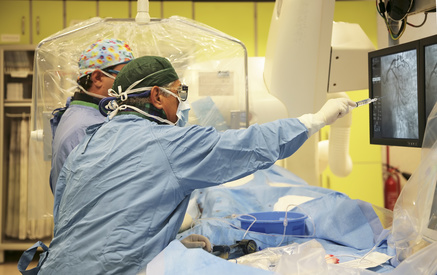Left main coronary artery (LMCA) intervention with significant lesions on both coronary angiography and intravascular ultrasound (IVUS), either through angioplasty (PCI) or myocardial revascularization surgery (MRS), is directly related to a decrease in long-term adverse clinical events. However, the relationship between subclinical LMCA disease (preserved luminal diameters) and long-term mortality is still unknown.

A retrospective observational study of consecutive patients at Columbia University Hospital who underwent IVUS (mainly with stable or asymptomatic angina) was conducted. Patients with cardiac transplantation, prior LMCA PCI or MRS, and very short LMCA hard to assess were excluded. Measurements obtained through IVUS were minimal luminal diameters (MLD), maximum plaque burden (MPB), calcium, and plaque attenuation. The primary endpoint (PEP) assessed was all-cause mortality, while the secondary endpoint (SEP) was cardiac death.
Out of 7786 patients who underwent IVUS from 2005 to 2013, 3239 were not in a revascularization plan (inclusion criteria) and were thus included in this analysis. The mean follow-up was 8.2 years and mean patient age was 66 ± 12 years; 65% of patients were male, 84% were hypertensive, 92.6% had dyslipidemia, and 37% had diabetes.
Angiographically, the LMCA had an average length of 10.1 ± 4.6mm and the reference diameter was 4.3 ± 0.9mm, with a minimum luminal diameter of 3.8 ± 0.9mm and an average stenosis of 12.5% ± 10.8%. The MLD measurement by IVUS was 13.1 ± 5.0mm and the maximum plaque burden was 41.7% ± 15.6%.
Higher plaque burden by IVUS was associated with higher all-cause mortality, (hazard ratio [HR] unadjusted for 10%: 1.17, 95% confidence interval [CI]: 1.12-1.22; p = <0.0001); smaller MLD by IVUS was also significantly associated with the same outcome (unadjusted HR per 1 mm2: 0.98; 95% CI: 0.96-0.99; p = 0.0008). In turn, alterations in both measurements (smaller minimum luminal diameter and higher plaque burden) were associated with the secondary endpoint of cardiac death. Due to difficulties in establishing cut-off points, an interpolated (spline) analysis was conducted, and it showed that increased plaque burden and MLD < 15 mm2 were associated with higher mortality.
After multivariate analysis was performed, the presence of plaque burden was associated with higher mortality, but that was not the case for MLD from IVUS or QCA measurement. In turn, when analyzing the LMCA region with subclinical disease, there were no differences between the presence of truncal ostial vs. bifurcation disease.
Read also: BEST-CLI: Revascularization of Critical Lower Limb Ischemia, a Pragmatic Study.
These findings on mortality and plaque burden were also observed in patients who did not have associated disease in the anterior descending or circumflex artery (n = 263).
Conclusions
In this contemporary observational study of LMCA in patients whose revascularization was not planned, it was found that the presence of IVUS-obtained plaque burden was significantly and independently associated with all-cause mortality. Every 10% increase in plaque burden was associated with a 12% increased risk of late 12-year mortality. These data should make clinicians aware of the importance of controlling risk factors in these patients to prevent disease progression. Regardless of the fact that lesions of less than 50% do not present hemodynamic consequences, this study featured high mortality rates.

Dr. Omar Tupayachi.
Member of the Editorial Board of SOLACI.org.
Original Title: Impact of Non-obstructive Left Main Coronary Artery Atherosclerosis on Long-Term Mortality.
Reference: Noguchi, Masahiko et al. “Impact of Nonobstructive Left Main Coronary Artery Atherosclerosis on Long-Term Mortality.” JACC. Cardiovascular interventions vol. 15,21 (2022): 2206-2217. doi:10.1016/j.jcin.2022.08.024.
Subscribe to our weekly newsletter
Get the latest scientific articles on interventional cardiology




